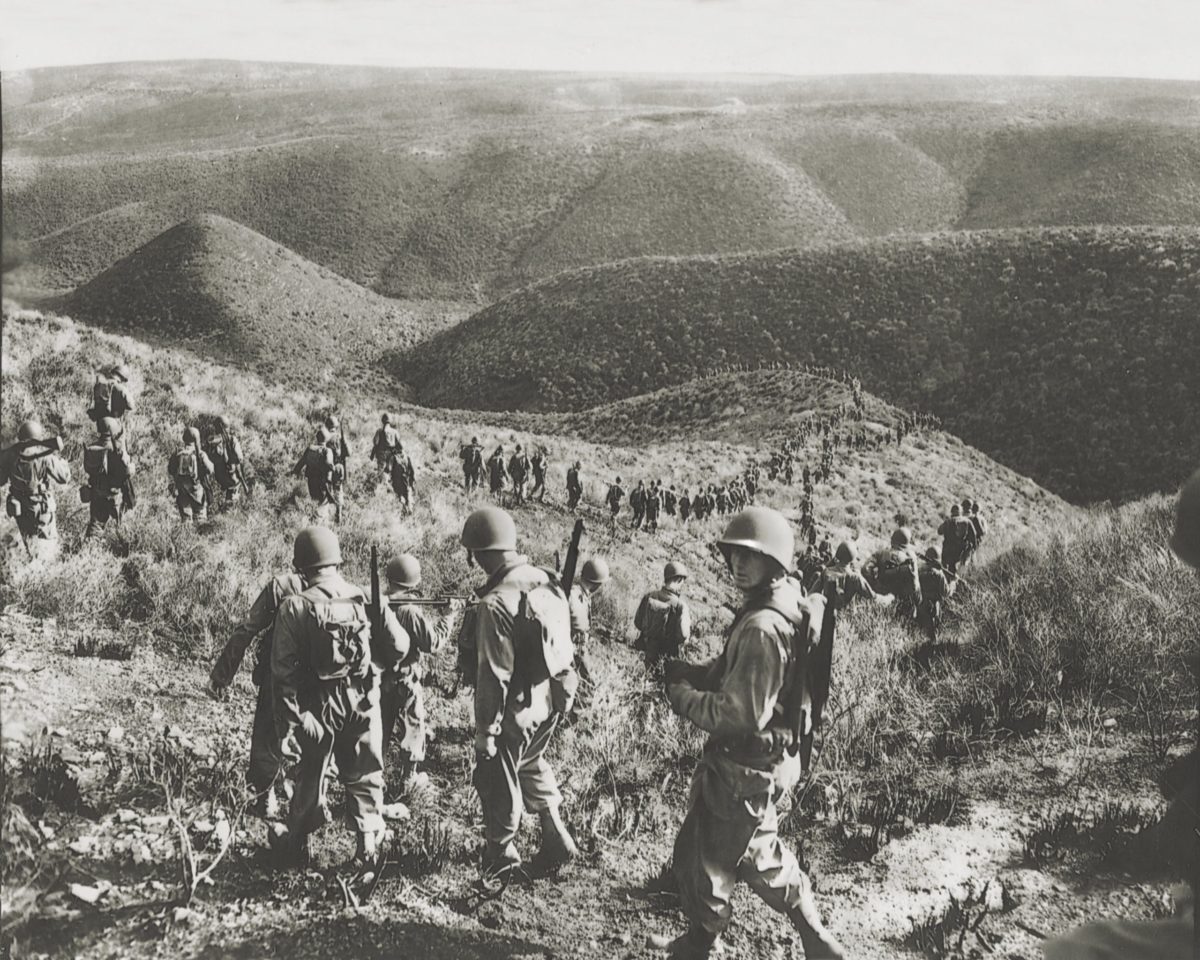Staff Sgt. Les Kness, 23, glanced at his buddy as their U.S. Army troop truck lurched and banged over the rugged terrain from the dusty airfield. Sergeant Les Cook, a fellow Iowan, was fully engaged with packing his pipe full of Prince Albert tobacco as he jostled back and forth against his fellow Rangers.
Cook, 21, seemed as content as usual. While most smokers in his company preferred cigarettes, Cook found being in the minority paid dividends: he always had a barracks bag full of red-tin smoking tobacco for his pipe. Kness’s thoughts turned to the mission at hand. It was February 7, 1943, and his unit had just landed on the Allied airfield of Youks-les-Bains in northern Algeria. Located just 17 miles from the army’s II Corps headquarters in Tébessa, the airstrip had seen dozens of C-47 troop transport planes touch down, carrying thousands of tons of special equipment and nearly 500 elite warriors.
It had been three months since Allied forces had successfully landed in Vichy-held French North Africa as part of Operation Torch, a three-pronged attack on the cities of Casablanca in Morocco and Oran and Algiers in Algeria. While British forces pushed west from Egypt, American ground forces drove south from the coast against territories aligned with Nazi Germany. Since then, the Germans and Italians focused on building up their forces in Tunisia; an upcoming Allied thrust into that country was to include special operations work conducted by Kness, Cook, and their comrades.
GET HISTORY’S GREATEST TALES—RIGHT IN YOUR INBOX
Subscribe to our HistoryNet Now! newsletter for the best of the past, delivered every Monday and Thursday.
They were handpicked members of the army’s 1st Ranger Battalion, under the command of William Orlando Darby, 32, from Fort Smith, Arkansas. A 1933 West Point graduate, he had been more than pleased to leave his staff position to take command of a new, bare-boned irregular unit that would certainly see combat. The so-called “Darby’s Rangers” were a commando outfit whose name referenced a similar force under Major Robert Rogers that had fought on the French and Indian War frontiers in the 18th century. Rogers’s Rangers had been popularized in American literature and, most recently, in the 1940 film Northwest Passage, starring Spencer Tracy and Robert Young.
Now Darby’s Rangers were about to embark on their own film-worthy exploits in North Africa, complete with triumphs and tragedies. Their adventures would include a run-in with their new corps commander, George S. Patton Jr.—a man initially much opposed to the Rangers’ rough-cut appearance and cocky swagger. In due time, Patton would learn to tolerate some of their unorthodox behavior—and would benefit significantly from the bravery of Darby’s men.
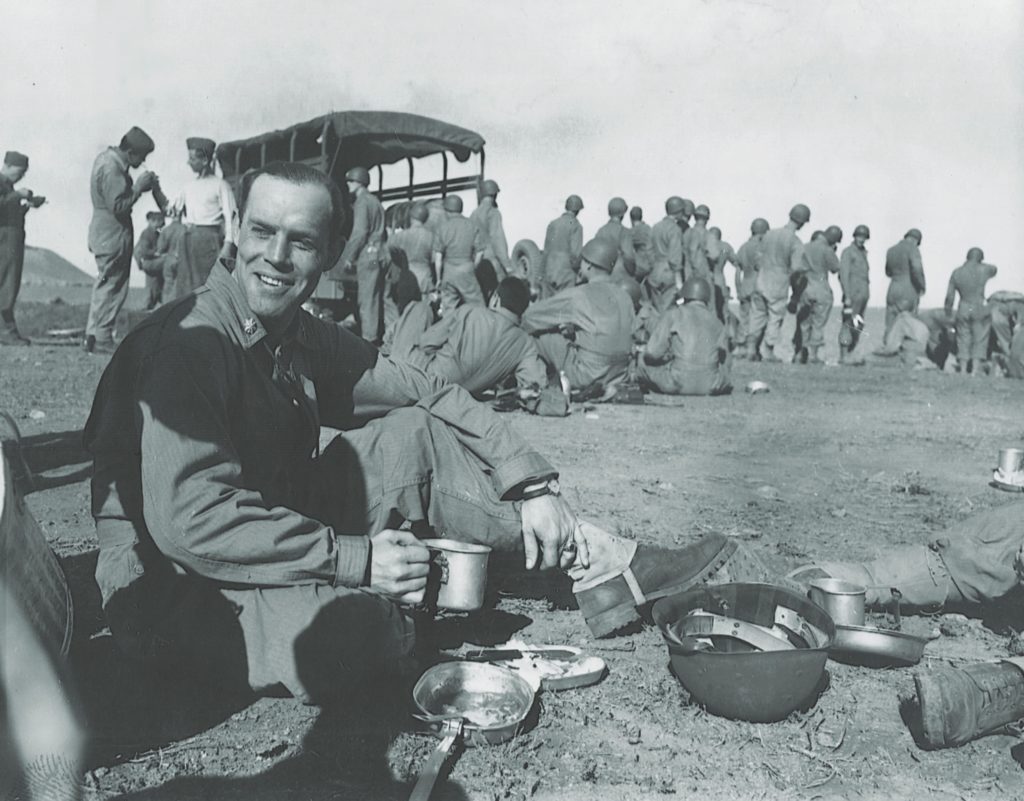
the chosen few
DARBY’S BATTALION had formed in June 1942 in Northern Ireland, where American troops were preparing for Operation Torch, culling recruits from more than 2,000 soldiers who had volunteered from various Fifth Army divisions. Within two weeks, Darby and his senior officers had weeded out nearly three-quarters of these men; those 481 officers and enlisted men selected were from all types of military specialties, but were required to be of exceptional physical ability, possess sound judgment, and be able to work autonomously in small groups to employ hit-and-run commando tactics.
Somewhere in this process—and for reasons not recorded—Kness had failed to make the cut. Hailing from Audubon, Iowa, Lester Elwood Kness was the dark-haired, blue-eyed fourth of six children raised by a high school custodian father after the death of their mother in 1923. Les and his younger brother, Marvin “Mike” Eugene Kness, had enlisted in the U.S. Army in early 1942 and shipped to Northern Ireland that year for further training. Weary of the monotonous drills, both brothers jumped at the chance to join Darby’s outfit.
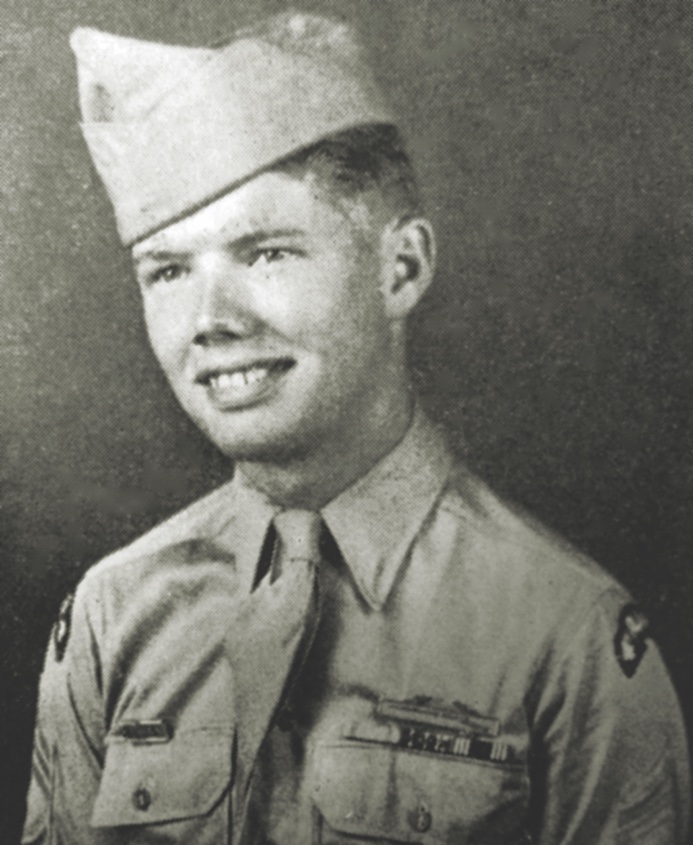
Les Cook (above) and Les Kness (below) had more in common than their first names: both had served in the Iowa National Guard before moving on to the U.S. Army and the 1st Ranger Battalion’s E Company. “I didn’t know what a Ranger was, but I volunteered,” Cook recalled. (Courtesy of the author)
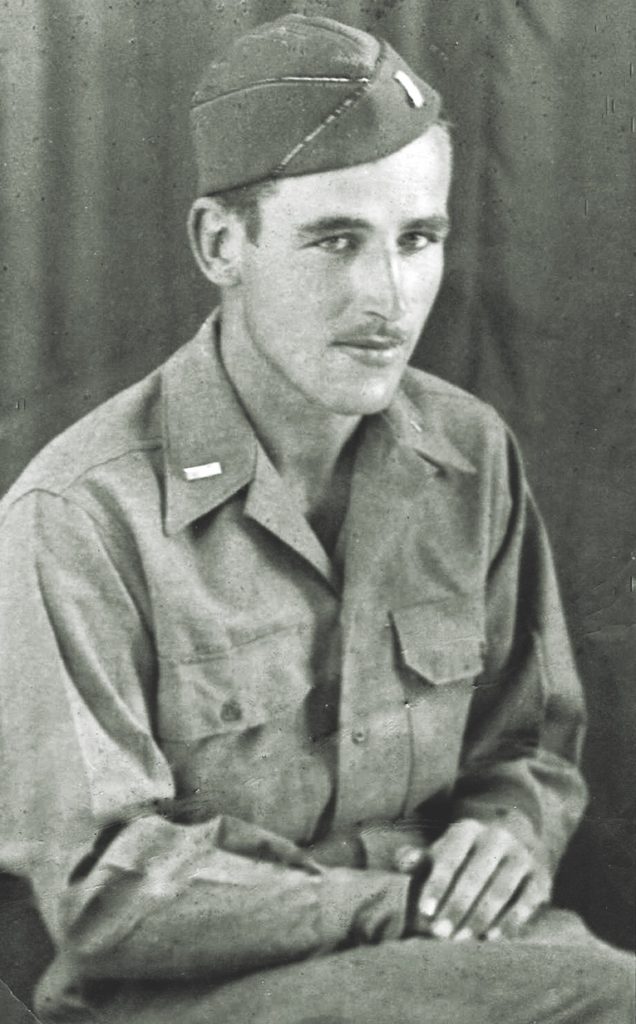
Mike had been quickly accepted, but Les was crestfallen to learn that he was among those cut in the weeding-out process. In his new role as a clerk for Darby’s Rangers, Corporal Mike Kness remedied the situation by typing his brother’s name and serial number into the newly formed company rosters as part of his own E Company. The sleight of hand was never discovered.
The battalion was divided into six companies, A through F. By the time the Rangers moved to Scotland in August 1942 for amphibious training operations with the British Royal Navy, Staff Sergeant Les Kness had become a section leader for First Lieutenant Max Schneider’s E Company. As such, he was soon in charge of 11 men: an assistant section leader, a Browning automatic rifleman, 7 riflemen, and 2 scouts.
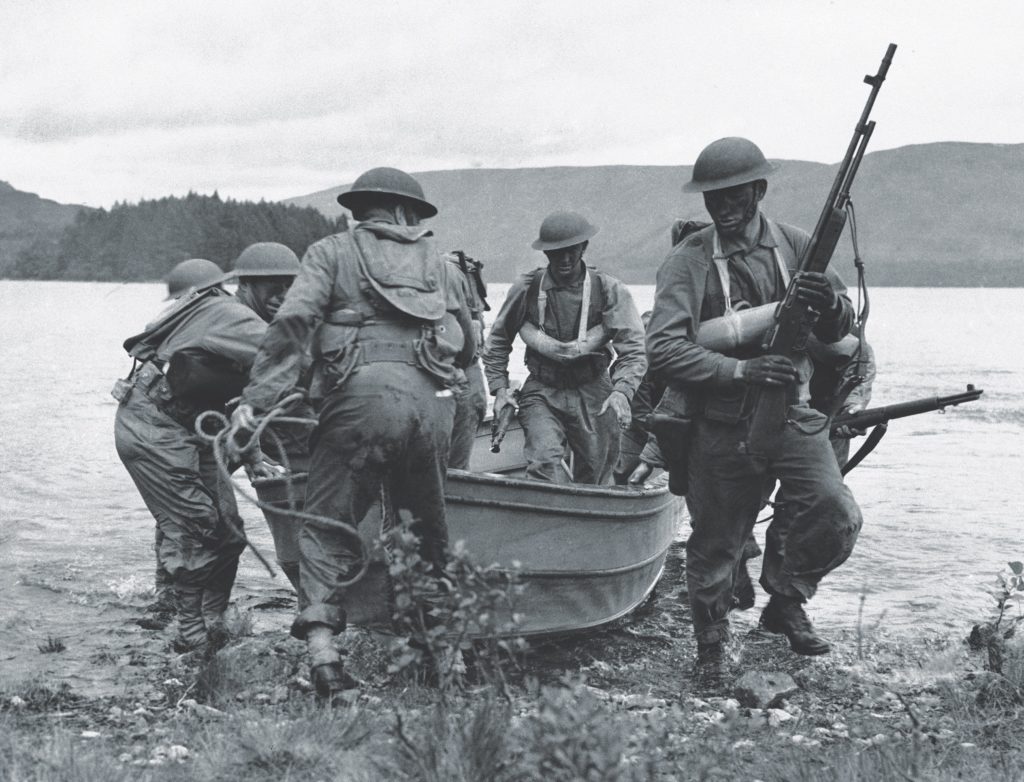
Kness tapped Corporal Lester Cook to be the automatic rifleman. Having both served in the National Guard in Iowa, the pair quickly became inseparable. With a boyish face and weighing just 97 pounds right out of high school, Cook had enlisted in the army in February 1941, at age 18. When he learned of a posting for Rangers recruitment, he was quick to act. “I was bored to tears,” Cook explained. “I didn’t know what a Ranger was, but I volunteered.”
Both men pushed through the rigors of training without much problem. Les Kness’s skills drew attention, and he became one of 7 officers and 12 sergeants tapped for temporary duty to observe the Second Canadian Division prepare to take part in a British-Canadian raid set for July on the German-occupied port of Dieppe in France. Planners knew from the outset that the intended capture of the port and destruction of German coastal defenses would have an only temporary effect, and was intended mainly to boost Allied morale and demonstrate the UK’s commitment to reopen the Western Front. Learning of the planned attack from British prime minister Winston Churchill, President Franklin D. Roosevelt insisted that American troops be included. Lieutenant Colonel Darby called the small group of Rangers slated to observe and participate “the chosen few.”
Originally planned for July 4, 1942, the Dieppe operation was postponed because of unfavorable weather and damage from a German fighter-bomber attack to two of the landing ships slated for use. By August 1, the 1st Ranger Battalion moved to Argyll, Scotland, for their amphibious training, then on to Dundee for practice attacking pillboxes and coastal defenses.
It was at a training base in central Scotland that Kness struck up a friendship with another E Company Ranger, First Sergeant Warren Evans, a powerfully built six-foot-three-inch native of South Dakota. A former South Dakota State football star and an impressive baritone singer, Evans was known as “Bing” after popular singer Bing Crosby.
Evans and Kness enjoyed boxing during their downtime. Evans found that although Kness was some six inches shorter than him, “he had arms that hung down to his knees. He kept me out there with his long arms and would give me a pretty good beating.”
Kness had been a skilled fighter long before joining the Rangers. He was not overly imposing at five foot ten, but he was broad-shouldered and powerfully built, with strong legs well suited for the forced marches the Rangers endured in training. Added to his rugged frame was an innate quickness, an ability to strike like lightning with both his hands and feet. Growing up dirt poor in rural Iowa, Kness had been ashamed to admit that at times he had been forced to scrounge for burnt toast and spoiled oranges in the waste bins behind restaurants. He had lost some of his permanent teeth at an early age, and he had been quick to react to any teasing about his smile with his fists.
During their free time in the summer of 1942, Kness and Evans frequented the pubs in the Scottish town of Fort William, near their central Scotland base. “Les and I enjoyed ourselves and fought anybody,” Evans recalled. “Every place we went, Les would start a fight and then leave me with it.” Kness insulted British soldiers, or anyone feisty enough to strike back, and Evans would quickly find himself in the middle of a first-class brawl.
The rough-and-tumble life of being a Ranger fit the pair well. Weeks into the training in Scotland, however, their tight bond was challenged when Evans was promoted as the battalion’s sergeant major. Because of his promotion, Evans was not allowed to participate in the Dieppe Raid when it was finally put into motion later in August. In his place was Kness, freshly promoted to E Company’s first sergeant.
Kness and 50 other Rangers accompanied British commandos and Canadian infantrymen when they embarked for Dieppe the night of August 18, 1942. The landing flotilla carrying other commandos, including some of the Rangers, came under assault by German “E-boats,” similar to American PT boats. “Shells that looked like little yellow balls were floating through the air, just beautiful,” Kness said. “It was like the Fourth of July.”
Although his boat never made it ashore to join the fight, 15 of Kness’s fellow Rangers did participate in the raid, becoming the first American ground soldiers to see action against the Germans in occupied Europe. Several were killed and another three were captured during the raid, which was considered a failure overall. But in taking a German battery, the Rangers had executed a model commando assault. And all, Kness felt, had gained valuable experience and enhanced stature among their peers.
Their new-won confidence showed in November 1942 when, as part of Operation Torch in North Africa, Darby and his special forces battalion were tasked with capturing two coastal defense batteries dominating the landing beaches at Arzew, a port town near Oran. By 4 a.m. on November 8—just hours after the landings had commenced—both enemy batteries were in Ranger hands.
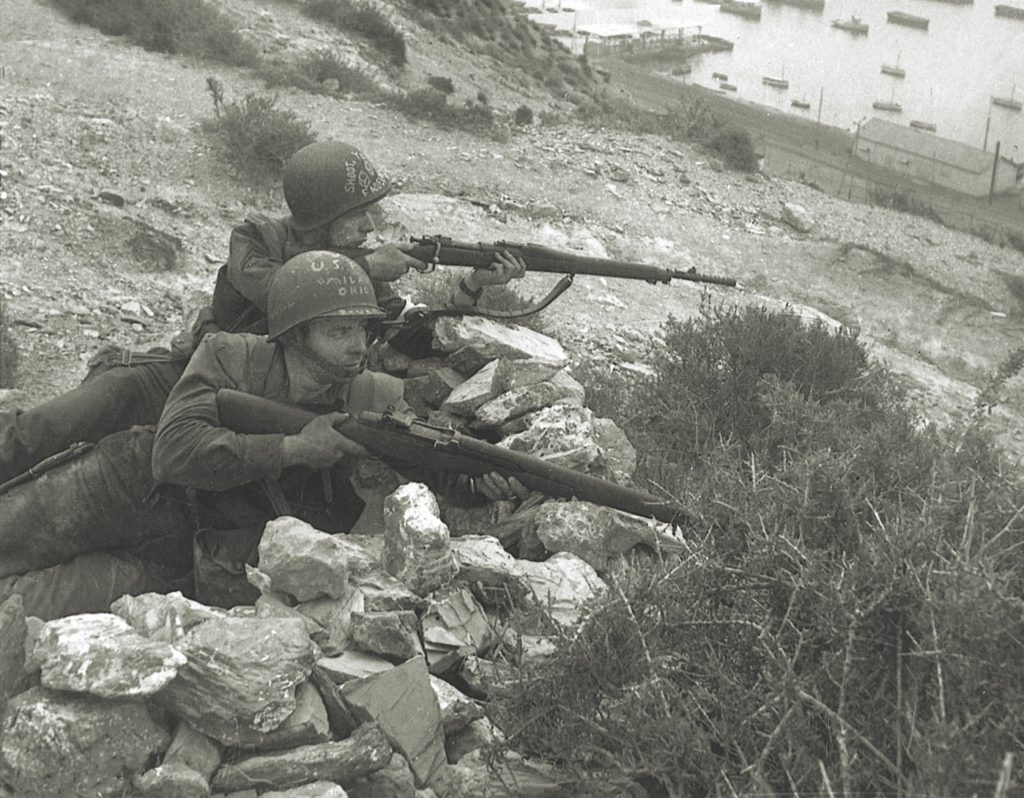
mission completed
NOW, AS NEW ARRIVALS in northern Algeria, Kness, Cook, and their fellow Rangers began setting up camp in the picturesque town of Tébessa. Bill Darby, meanwhile, went to the headquarters of Major General Lloyd Fredendall, 59—the sandy-haired, blue-eyed, commander of the U.S. Army’s II Corps—for a briefing. There, his force was given a special mission—conducting darting, pinpricking nighttime raids to give their Axis enemy the impression that Allied strength in central Tunisia was greater than it actually was. Tasked with capturing prisoners and inflicting heavy losses on the enemy with fewer than 500 men under his command, Darby believed that if they accomplished this mission, his men had the chance to stand out to the army’s high command.
The first raid would be against Sened Station, a railway junction and Axis supply depot located near Sened Pass in Tunisia—one reportedly occupied by Italian soldiers of the Centauro Division of the Bersaglieri, an armored division of the Italian Army. The morning after he talked to Fredendall, Darby led a small patrol there on a reconnaissance mission to gather intelligence.
Three companies of Darby’s Rangers, Kness and Cook’s E Company included, would participate in the assault on Sened Station. “We’re gonna throw the commando book at them—bayonets, knives, grenades—the works!” Captain Roy A. Murray told his F Company in a pre-raid briefing. “They’ve got to know they’ve been worked over by Rangers.”
Early on the morning of February 11, 1943, 200 Rangers advanced over eight miles of rugged desert terrain to reach their objective by dawn. Kness and the Rangers in his company completed the hike without event—although Cook took his share of teasing during the advance. With a reputation for getting tangled in barbed wire during previous night marches, he was razzed that if there was barbed wire within 100 miles of the Rangers in North Africa, he’d be the only man to get tangled in it.
The Rangers concealed themselves during daylight, studying their enemy’s movements four miles away with field glasses. Around midnight, they were on the move again, employing stealth and silence to ease in on the Axis strongpoint. They had camouflaged themselves by smearing their faces and hands with dirt, their dog tags taped together to prevent any clinking sounds. “We would jump up and down in front of the guys beside us, so we could check one another for any loose rattle of equipment and quieten it,” Cook said. “We turned our wristwatches over to hide the glow of the face and made sure our shirt sleeves covered them.”
Kness had the men of his platoon don brimless knit caps instead of steel battle helmets, as the men in the other companies had done. Each man’s back bore a piece of white tape marked with an X, Y, or Z, depending on the company, to help them maintain formation. They’d been ordered to kill anyone without tape on his back, or anyone wearing a helmet.
Darby’s men advanced swiftly over rocks, ravines, and boulders to reach a point about 600 yards from the Italian post at Sened Station. At 1:20 a.m. on February 12, Darby ordered the charge. When the sergeant of E Company’s first platoon yelled, his men began to run. But the second platoon, led by two newer officers, was sluggish. Kness jumped into action, hollering at the men until they took off at a dead charge, with Kness running right alongside them over the hill.
During the charge, the Rangers faced Italian machine guns and a 47mm cannon. Within 20 minutes of fighting—some of it hand to hand—Darby’s men killed at least 50 opponents, wounded many more, and took 11 prisoners. One Ranger was killed and another 18 were wounded by the time they fell back toward their origination point. During the day, Sergeant Kness’s platoon assisted their most severely injured men back to Tébessa.
In the afternoon of the next day, February 13, Major General Fredendall arrived to pin decorations on the brave Rangers. Fourteen officers and men received the Silver Star, and four other men were given battlefield
commissions. Among them was Les Kness, advanced to the officer’s rank of second lieutenant. Nine months after his brother Mike had employed muster-roll trickery to get Les into Darby’s elite battalion, he had become one of only 22 Rangers who had participated in both the Dieppe and Sened Station raids.
GET HISTORY’S GREATEST TALES—RIGHT IN YOUR INBOX
Subscribe to our HistoryNet Now! newsletter for the best of the past, delivered every Monday and Thursday.
punished by patton
ELEVEN DAYS LATER, the U.S. Army was in a bad state, having suffered heavy losses in battles at Sidi Bou Zid and Kasserine Pass near the western border of Tunisia—combat that hadn’t involved the Rangers in any significant way. Fredendall was relieved of the command of II Corps, replaced by a fiery former tank commander, George Patton.
Upon arriving at his new headquarters on March 6, 1943, Patton, then a major general, set to work implementing stronger discipline within his corps. He started with the most basic rules, including how to salute and how to dress. During the next week, “Old Blood and Guts”—who learned he had been promoted to lieutenant general on March 12—railed at soldiers he found without neckties or the much-disliked gaiters, which covered boots from the ankle up to keep out rocks and mud. On March 13, Lieutenant Kness and some of his fellow Rangers were among those fined for not being in proper uniform.
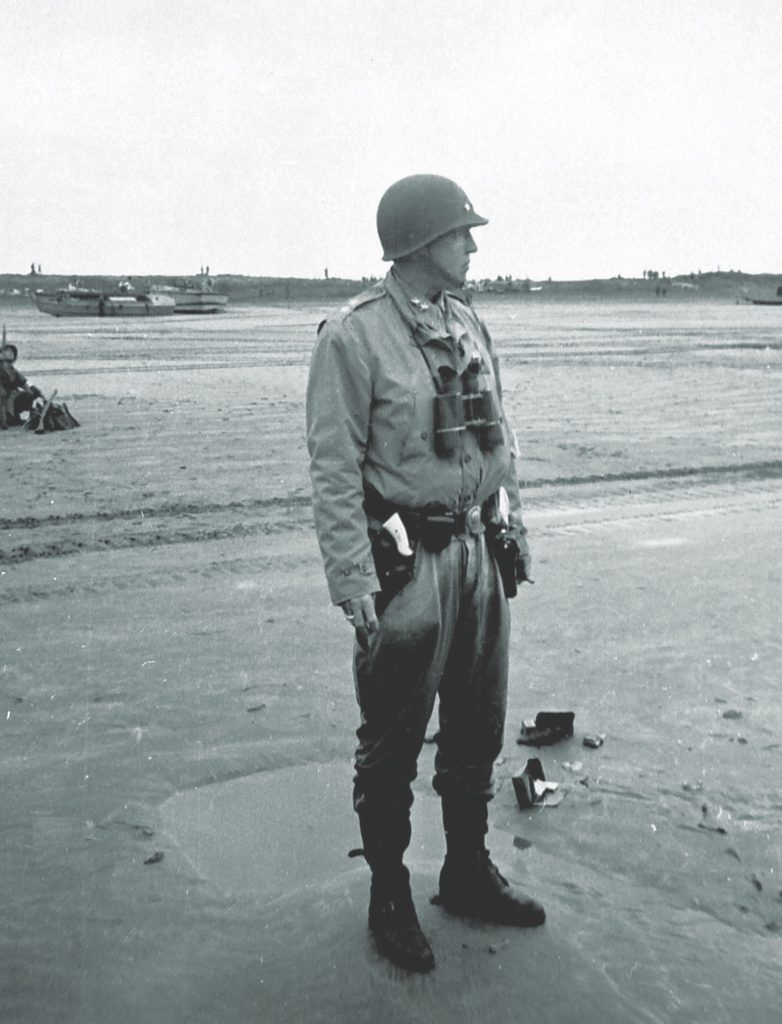
Darby’s battalion—now operating with the U.S. Army’s 1st Infantry Division—had been preparing for another raid against a German position in Tunisia when the new commander arrived on the scene. Kness had taken 14 Rangers into the town of Le Kef to store their barracks bags for the assault. All were dressed in work-detail clothing and soft skull caps. Brigadier General Hugh Gaffey, Patton’s corps chief of staff, chewed out Kness for the sloppy appearance of his men and marched them back to Patton’s headquarters. Kness was hauled in before Patton to address charges that his men were out of proper uniform and had shown no respect to Gaffey.
Patton, in his characteristic high-pitched voice, asked Kness: “Is this true?”
Kness’s fighting instincts kicked in; his exchange with the new commander became heated, bringing a threat from Patton to ship Kness back to the States and separate him from service. The general hammered his fist on his desk, his face aflame and angry. The lieutenant tried to explain how he was newly commissioned and that no proper officer uniforms were available to him, but Patton berated him for not wearing his necktie.
“Sir, we are in the process of moving out this evening to attack an enemy artillery position,” Kness remembered saying. “We had permission to remove our neckties for the fight.”
“No one can rescind one of my orders!” Patton yelled. “Do you understand?”
The general handed down orders that each Ranger be fined $25 and held in the stockade overnight. Once Patton and Gaffey had departed, Kness was summoned back into the office to pay his fine. Irritated, he muttered “armchair commando” toward one of Patton’s staffers seated behind the desk. “He raised up and, to my surprise, was a full bird colonel,” Kness recalled. “I found out what a master at reaming was really like.”
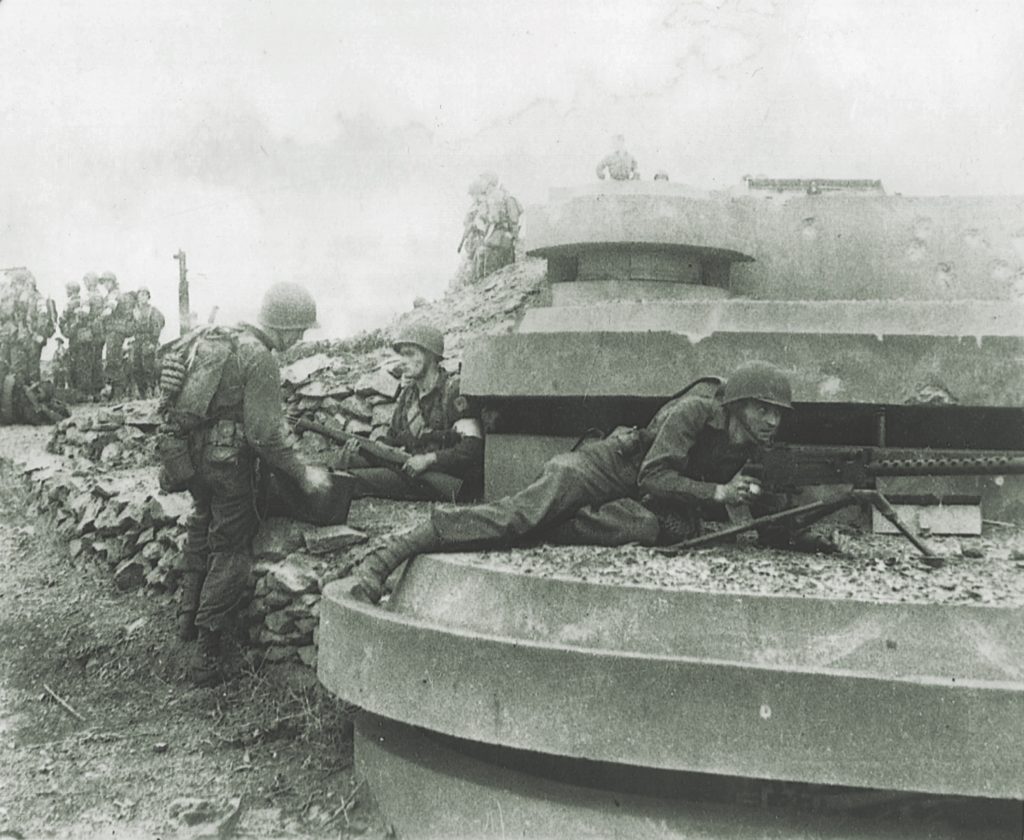
the rangers’ big win
ONE WEEK AFTER his crude introduction to George Patton, Lieutenant Kness and his Rangers were preparing for another important overnight raid. It was March 20, 1943; three days prior, the U.S. Army’s 1st Infantry Division had taken the Tunisian city of Gafsa for use as a forward supply base. The following day, March 18, the Rangers had occupied the oasis of El Guettar with very little opposition. Now Darby’s 1st Ranger Battalion had orders to occupy an observation post on a distinct knob labeled “Djebel Orbata” on North African maps. East of Gafsa, the Orbata mountain rose sharply to a height of 3,800 feet and roughly paralleled the course of the main road from Gafsa through the town of El Guettar.
Two of Darby’s patrols had reconnoitered the slopes the previous night. They found its ridge infested with Italian soldiers who had fired upon them. To make the assault, Darby employed his entire battalion. The nearly 500 Rangers had rifles, grenades, knives, and two 60mm M2 mortars per company, and the battalion also had 12 .30-caliber M1919-A4 machine guns. Moving with them was a company of the 1st Engineer Battalion, who called themselves “hell squads,” each unit towing 37mm antiaircraft guns and pairs of 81mm mortars.
The trek began at 11 p.m. The terrain was wicked in the darkness, filled with knife-like ridges, boulder-strewn hills, and precipitous dry ravines known as wadis. Toggle ropes were often necessary to help move men and equipment up and down cliffs and over ravines. They stumbled and cursed silently, groping through difficult gorges, breathing hard as they lugged their heavy gear and helped to pull other men up steep draws. Kness was up for the challenge. He considered the rough climb to be just the thing his unit had been training for.
Five hours into their journey, the Rangers reached a sharp drop that required men to climb hand-over-hand down the cliff, silently passing equipment to each other. Daylight was fast approaching on Djebel Orbata as Darby directed his companies toward their final positions. As Kness’s men came up over the mountain rim to confront the enemy, they were closest to the center of assault. His Second Platoon moved out to go over the rim toward the enemy positions. Leading a squad from E Company, Sergeant Les Cook was sweating from the exertion. For his Tommy gun, Cook was carrying 10 magazines with 20 rounds each, 5 on each side of his belt.
At 5 a.m. on the 21st, a bugle call signaled the attack against Djebel Orbata. Surprise was complete at first, but the Rangers were soon faced with silencing a German artillery piece and an Italian machine gun nest. Rangers, their faces darkened, surged forward, firing their guns and bayonetting Italian soldiers who resisted. In short order, dozens of Italians were waving white flags of surrender.
The next half hour deteriorated into a series of scattered assaults. Small pockets of resistance remained to be cleared, while other Italians gave up the fight in groups. Two hours after the assault commenced, a straggling mortar squad arrived and quickly knocked out another Italian machine gun nest. By the time two battalions of the 26th Infantry reached the pass, the Rangers had the situation well in hand, their only organized resistance being other dug-in machine gun positions south of the road.
All six Ranger companies fought through the morning hours and, by 12:20 p.m., Darby was able to report by radio that the inner portions of the pass had been cleared. By late afternoon, some 1,400 Axis prisoners had been rounded up and marched down from the hills. The Rangers returned to their bivouac area at El Guettar by late afternoon, turning over their prisoners for processing.
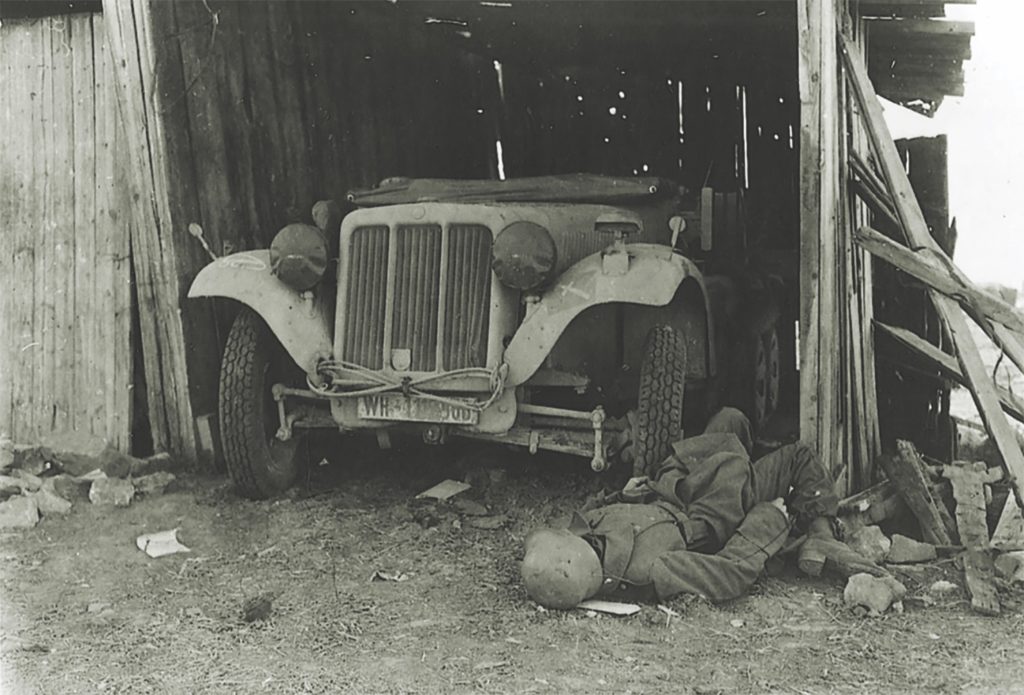
Compared to the bloody combat the Rangers had endured in the Dieppe and Sened Station raids, Kness considered the surprise assault on Djebel Orbata to be “a cakewalk.” Darby’s men had conquered the coveted high ground with only six men wounded. The weary 1st Ranger Battalion was happy to accept hot stew, ladled into their helmets, and canteen cups from kitchen truck cooks, while infantry regiments of the 1st Division pushed southeast of El Guettar before digging in for the evening. Lieutenant General Patton could now boast that his troops had reclaimed more than 2,000 square miles of territory—capturing Sened Station, Gafsa, and El Guettar—in a mere five days.
Proudly sporting his new three stars, Patton went to the front lines to watch the show on March 21. During the afternoon, his command group left its division post and headed east toward a point where the 18th Infantry Regiment was fighting. “The soldiers told me to get back, which, of course, prevented me from doing so,” wrote Patton, who hoped to instill courage in his men.
The fight that became known as the Battle of El Guettar was in its opening stages, and would consume more days before the outcome was decided early in April 1943. It was the U.S. Army’s first major victory against Axis troops in the European Theater of Operations—a real morale booster that would flush the soldiers with great confidence for the long road to ultimate victory that lay ahead. But things never moved fast enough to please Patton.
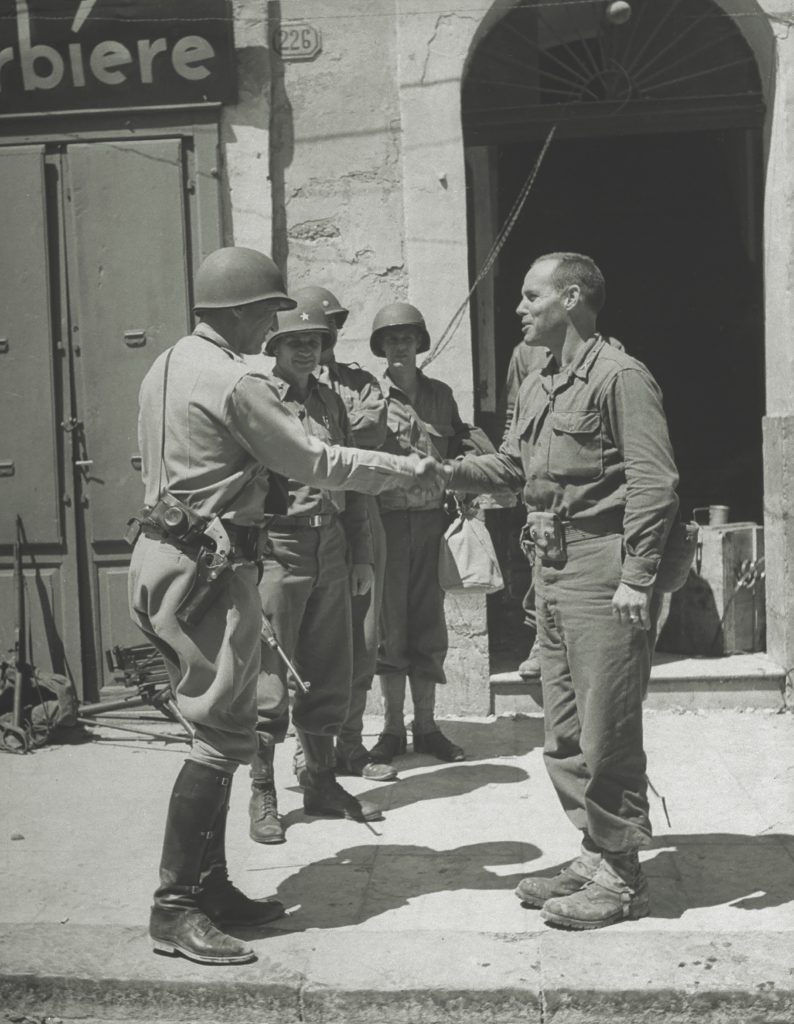
The very men Patton had railed against in mid-March, Rangers like Les Kness and Les Cook, had played a key role in helping secure that victory. By the end of the El Guettar campaign, Bill Darby considered his men to be “battle-tested veterans, experienced in mountain and hit-and-run warfare.” A year later, his battalion—a forerunner to today’s U.S. Army Special Forces—would be honored with a Presidential Unit Citation for its valor in North Africa.
Patton later declared Darby to be “the bravest man I ever knew.” His first impressions of the unconventional 1st Ranger Battalion had not been kind or gratifying, and some of them would forever resent the general. But Patton would not look down on these warriors again.
Adapted from PATTON’S PAYBACK by Stephen L. Moore, published on May 17, 2022, by Dutton, an imprint of Penguin Publishing Group, a division of Penguin Random House LLC. Copyright © 2022 by Stephen L. Moore.

